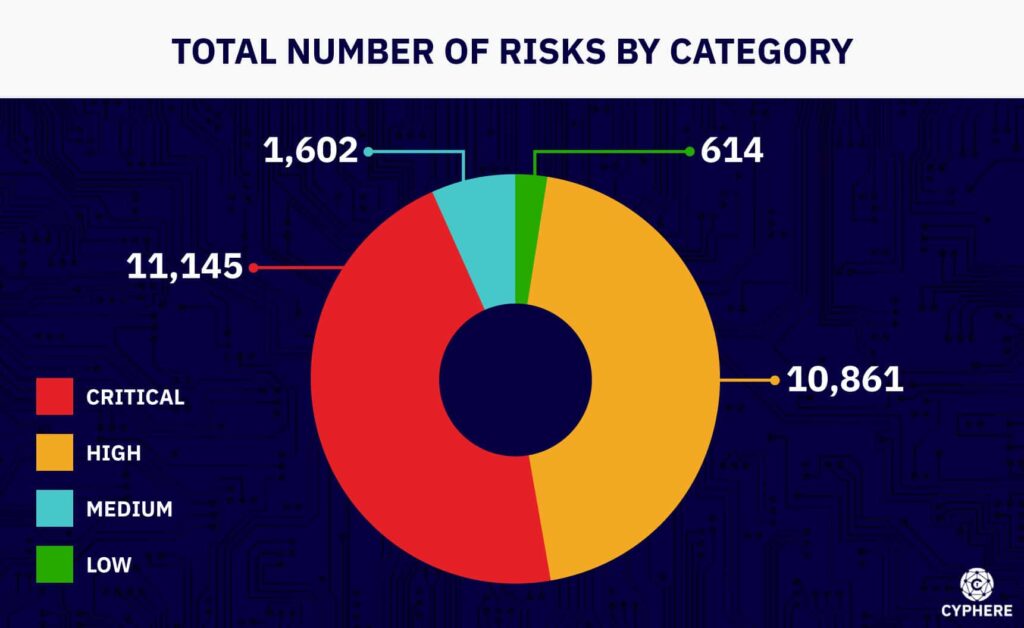Mobile applications are ubiquitous, but their security can be a concern. Unlike web applications, in a mobile landscape, both the device and the mobile application have a crucial role in security due to increasing cyber threats. Mobile application penetration testing (mobile app pen testing) is a proactive security measure to identify and address vulnerabilities before malicious actors exploit them. Automated tools are part of these proactive security measures used in mobile application penetration testing.
What is Mobile application penetration testing?
Mobile app pen testing is a simulated cyberattack that uncovers weaknesses that can be mitigated to improve mobile application security. It’s like a thorough security checkup for your app, ensuring it can withstand real-world threats and protect sensitive user data.
💡 This article is part of our extensive guide on penetration testing.
Pros & cons of mobile application penetration testing
Mobile application security testing is like putting a forcefield around your app. Here’s why it’s important:
- Data Protection: Mobile apps often handle sensitive user data like personal details and financial data. Pen testing helps safeguard this data from unauthorised access.
- Business Continuity: Many businesses rely on mobile apps for critical operations. Pen testing ensures these apps are resilient to attacks, protecting both the company and its customers.
- Cost Savings: Identifying and fixing vulnerabilities early on through pen testing is far less expensive than dealing with the aftermath of a security breach.
- Proactive Security: Pen testing allows you to proactively address weaknesses and prevent real-world exploitation by simulating attacks in a controlled environment.
💡Did you know?
Revolut has suffered a cyberattack that facilitated an unauthorized third party accessing personal information pertaining to tens of thousands of the app’s clients. Souce
Cons:
- Cost: Pen testing can be a costly endeavour, depending on the complexity of the app and the scope of the testing.
- Time Commitment: Pen testing can be a time-consuming process, potentially delaying the app development or launch timeline.
- False Positives: Pen testing can sometimes identify vulnerabilities that are not actually exploitable. This can lead to wasted time and resources spent on remediation efforts.
Types of mobile apps that can be pentested
Mobile app pen testing applies to various types of apps:
- Native Apps: Built specifically for a single platform (iOS or Android) and offer the best performance and security potential.
- Hybrid Apps: Combining web technologies with native features, these apps work on multiple platforms but may have some performance or functionality limitations compared to native apps.
- Progressive Web Apps (PWAs): These web apps function like native apps, offering advantages like easy updates and offline capabilities.
Security Risks Associated with Mobile Apps
Mobile apps have become an essential part of our lives, but with this convenience comes a responsibility to safeguard our data. Here is a short mobile app security checklist having six major security issues associated with mobile apps:
Insecure Data Storage
When apps store sensitive information like login credentials or financial data, it must be encrypted and secured. Hackers can exploit weak storage mechanisms to steal this information for malicious purposes. This can lead to identity theft and financial losses.
Untrusted Inputs
Mobile apps often accept user inputs like login details or search queries. If these inputs are not properly validated and sanitized, attackers can exploit them to inject malicious code. This can give them unauthorized access to the app’s backend systems or steal sensitive data.
Box-ticking approach to penetration tests is long gone. We help you identify, analyse and remediate vulnerabilities so you don’t see the same pentest report next time.
Cyber attacks are not a matter of if, but when. Be prepared.
Insecure Communication
When data travels between your phone and the app’s servers, it can be vulnerable to interception if not secured. Unencrypted communication channels expose data to eavesdropping and man-in-the-middle attacks, where attackers can steal information or tamper with data transmissions.
Insufficient Cryptography
Encryption is crucial for protecting data at rest and in transit. Weak encryption algorithms or improper key management practices can leave data vulnerable to decryption by attackers. This can lead to data breaches and compromised user credentials.
Code Obfuscation
While code obfuscation can make it harder for attackers to understand how an app works, it can hinder legitimate security professionals’ security analysis if not implemented carefully. This can create blind spots and make it easier for attackers to exploit vulnerabilities in the code.
API Keys or Tokens
Due to insecure practices, API keys or authentication tokens can be accessed, abused, or stolen from devices or mobile applications.
Real-World Example
A recent example from May 2024 includes Dropbox Sign breach showing how API keys and OAuth tokens were exposed. The 2021 Dropbox Sign incident highlights the importance of pen testing. A vulnerability was discovered that allowed unauthorized access to some documents. While Dropbox quickly addressed the issue, it underscores the need for continuous security testing to proactively identify and fix such flaws.
How do we perform mobile application penetration testing?
Mobile applications hold our sensitive data, so keeping them secure is paramount. Mobile application penetration test acts like a security checkup, identifying weaknesses before attackers exploit them. Here’s a simplified breakdown of the 4 key steps:
Analysis & Evaluation
Mobile application security consultants analyse the mobile application during this phase to identify potential vulnerabilities. Automated tools are used to identify common vulnerabilities but complement manual testing, providing deeper insights and analysis. This combination ensures a thorough evaluation of the app’s security.
Preparation & Discovery
Pen testers gather intel – understanding the app’s architecture and how data flows, and even using publicly available info to uncover potential entry points for attacks.
Analysis & Evaluation
A deep dive into the app’s security. Pen testers use a mix of techniques like code analysis, examining app behaviour, static and dynamic analysis, architecture analysis, and even reverse engineering to find vulnerabilities. Automated tools are also employed to identify common vulnerabilities, but they complement manual testing and cannot fully replace the insights and analysis provided by manual pentesting. Reverse engineering involves deconstructing the app to understand its inner workings and potentially hidden security flaws due to lack of secure coding practices.
Exploitation
Simulating real-world attacks! Pen testers use discovered vulnerabilities and custom exploits to see how the app would respond to a real attack.
Data Analysis and Reporting
The final step is creating a report detailing everything – the vulnerabilities found, how severe they are, and how to fix them. This report becomes a roadmap for developers to strengthen the app’s security.
💡Suggest Read: How to write a better penetration testing report?
Things to consider before proceeding with mobile app security testing
Mobile app pen testing goes beyond just pushing buttons. Before starting, consider the following five crucial areas:
- App Design and Architecture: Review the app’s blueprint for potential security weaknesses.
- Network Traffic: Assess how the app communicates over networks, especially on public Wi-Fi.
- Data Storage: Ensure sensitive data is stored securely and encrypted.
- Authentication: Evaluate the strength of login mechanisms and session management.
- Code and Configuration: Check for misconfigurations and coding errors that could be exploited.
Mobile App Penetration Testing Tools
Pen testing doesn’t have to break the bank! Automated tools can help identify common vulnerabilities in mobile apps, but they complement manual testing to provide deeper insights and analysis. Here are some powerful open-source penetration testing tools to reinforce your mobile app’s defences:
- MobSF (Mobile Security Framework): An open-source framework for analyzing Android and iOS apps.
- Drozer: A tool for finding security vulnerabilities in Android applications and mobile devices.
- Clutch: An open-source tool for decrypting and analyzing iOS apps.
- Cycript: Allows for dynamic analysis and modification of iOS and Mac apps.
- Frida: A dynamic instrumentation toolkit for various platforms, including iOS and Android mobile applications.
- Radare2: A versatile open-source tool for disassembling, debugging, and analyzing binaries.
- Some tools that are used in mobile application penetration testing and web apps include Burp or Zap for proxying and manual testing.
iOS Vs. Android app pen testing
Penetration testing is a security professional’s way of finding weaknesses in an app before malicious actors do. Regarding mobile applications, there are two major players: iOS and Android. And guess what? Pen-testing these is quite different. Let’s dive into the key differences between iOS and Android app pen testing:
Playing by Different Rules
- Open vs. Closed: Android is open-source, meaning anyone can peek under the hood. This flexibility lets manufacturers customize the OS but also creates fragmentation across devices and versions. iOS, on the other hand, is a closed garden controlled by Apple. This translates to a more uniform environment but limits customization.
- App Distribution: Google Play Store has a looser grip on apps compared to Apple’s App Store. This can introduce some risks on Android, as malicious apps might slip through the cracks.
- Testing Devices: With a wider range of devices and OS versions on Android, testers have their work cut out for them. iOS, with its controlled environment, offers a more streamlined testing experience.
Under the Hood
- Permissions: Android apps often request more permissions than their iOS counterparts. Pen testers need to scrutinize these permissions and relevant security controls to ensure they’re justified and not exploitable.
- Code & Architecture: Android apps are primarily written in Java and run in a sandboxed environment. iOS apps, on the other hand, leverage Apple’s development tools and stricter security controls.
Pen Testing Tools & Techniques
- Breaking In: Rooting an Android device grants deeper access for pen testing, while iOS testing often relies on simulators that may not perfectly mimic real-world scenarios.
When should you do mobile application pen testing?
There are several ideal times to conduct mobile penetration testing, and the frequency can vary depending on your app’s specific characteristics:
- Pre-Launch: Before making your app public, pen testing is essential to identify and rectify vulnerabilities, safeguarding your reputation and user trust.
- Post-Update: After significant updates or new feature releases, testing is crucial to ensure that these changes haven’t introduced new security risks.
- Regular Intervals: Even for mature apps, regular testing (e.g., bi-annually or quarterly) is vital to stay ahead of evolving threats and address emerging vulnerabilities.
- High-Risk Apps: For apps handling sensitive data, consider more frequent testing, such as monthly or quarterly intervals, to mitigate heightened risks.
- Compliance Requirements: If your app needs to adhere to specific industry regulations (like PCI DSS, HIPAA or GDPR), regular testing is often mandatory to demonstrate ongoing compliance.
How Cyphere can help with mobile pen testing?
Absolutely! Cyphere can be a valuable asset in strengthening your mobile app’s security through pen testing. As a leading provider of mobile application penetration testing services, Cyphere offers a comprehensive assessment to identify and address potential vulnerabilities in your app.
Our team of security experts can simulate real-world attack scenarios to uncover weaknesses and ensure your app is built on a secure foundation.
Here’s why Cyphere stands out for mobile app penetration testing:
- Experienced Team: Cyphere boasts a team of security professionals with the expertise to navigate iOS and Android app security intricacies.
- Tailored Approach: We understand that every app is unique. We tailor our pen testing approach to your specific app’s functionalities and risk profile.
- Actionable Results: Cyphere doesn’t just identify vulnerabilities; it provides a detailed report with actionable recommendations for remediation.
- Compliance Support: Our pen testing services can also help you meet industry compliance standards and regulations.
Whether you’re launching a new app or fortifying an existing one, our mobile pen testing services can empower you to build trust with your users by safeguarding their data.















